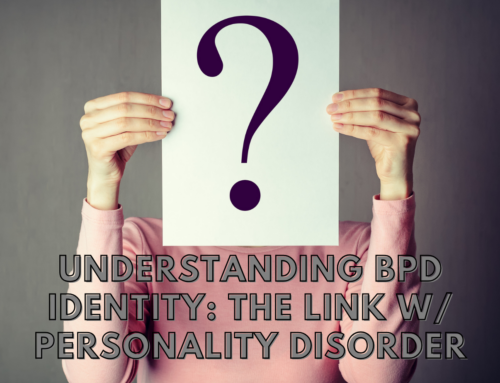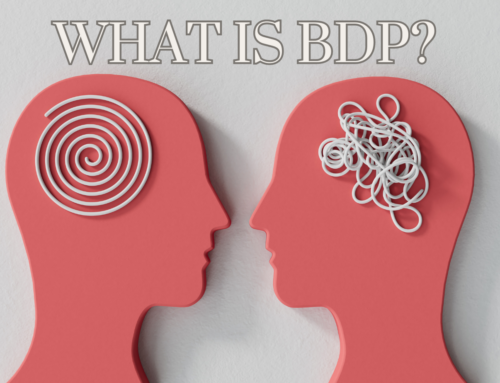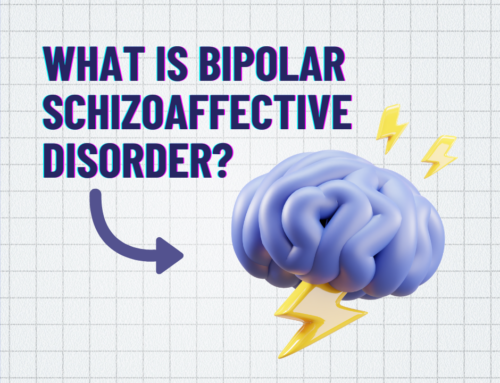Despite common beliefs, there are many similarities between borderline personality disorder (BPD) and autism spectrum conditions (ASC). By understanding the similarities and differences between BPD and autism, individuals struggling with these disorders and those around them can take proper steps toward healing. Highlighting these similarities and differences will also show the complexity of mental health conditions and help reduce the stigma surrounding them.
Differentiating Between Borderline Personality Disorder (BPD) and Autism Spectrum Disorder
BPD is a personality disorder characterized by intense emotional dysregulation and difficulties with trust, cognitive empathy, intimacy and interpersonal functioning. BPD personality traits typically include impulsivity, antagonism and inhibition. Although some borderline personality disorder traits are similar to autistic traits, the disorders are also very different.
Individuals may struggle with insecurity and frequent mood swings, causing them to distance themselves from others. BPD symptoms are often intense and long-lasting, making it challenging to establish emotional stability. The disorder is usually diagnosed in late adolescence or early adulthood and is more common in women. Approximately 1.4% of American adults have a BPD diagnosis.
Autism spectrum disorders are neurodevelopmental disorders characterized by social and communication difficulties. Autistic individuals may find it challenging to understand social cues or facial expressions accurately. They also may develop unusually strong, specific interests and repetitive or restrictive behaviors.
While symptoms of autism spectrum disorder can vary widely, they typically include difficulties with making eye contact or integrating communication styles. Autistic people may not always understand the emotions of others or have the correct vocabulary to express themselves. About 1 in 59 American children is diagnosed with autism, and boys are four times more likely to develop symptoms.

Is Misdiagnosis Common?
Borderline personality disorder and autistic spectrum conditions are sometimes misdiagnosed because they present similar interpersonal skills and emotional regulation challenges. Many autistic women hospitalized due to a suicide attempt or self-harm injury are misdiagnosed with BPD rather than referred for an autism assessment. Women are more likely to mask their autism, and the disorder presents differently in women and men, which can explain why it’s often overlooked.
Individuals on the autism spectrum are more likely to develop BPD than others, but their autistic symptoms may be ignored because autism isn’t usually considered during a BPD evaluation. Individuals with autism or BPD are also at risk of having co-occurring mood disorders, such as major depression and anxiety, which can lead to a misdiagnosis.
A misdiagnosis can delay a person from receiving appropriate treatment, causing symptoms to worsen. Individuals may also miss out on finding proper support and building community with others with the same disorder. They may become more isolated and blame themselves for their struggles, which can result in additional mental health issues or harmful behaviors.

Self-Harming Behaviors
People with BPD or autism, including autistic children, are at a greater risk for mood disorders and suicidal ideation than the general population. In contrast, those with high-functioning autism are more likely to commit suicide. Self-harm is also commonly observed among people with either disorder.
For autistic individuals, self-harm risk factors include sensory overload, lack of identity and emotional dysregulation. Those with BPD may resort to self-harming behaviors if they don’t get the reaction they want from others because of their insecure attachment style. Self-harming behaviors can include:
- Hair pulling
- Hitting oneself
- Skin picking
- Banging one’s head against the wall
- Cutting certain parts of the body
Eating disorders, including anorexia nervosa and bulimia nervosa, are also observed among individuals in both groups.
Substance Abuse and Addiction
Substance abuse and addiction rates are high for people in both groups. Many individuals may use drugs or alcohol to cope with sensory problems and social stress. It was previously believed that autistic individuals had low rates of substance abuse due to their habit of strictly following rules. However, recent research suggests otherwise.
One Harvard study shows that 1 in 5 young adults being treated for addiction also shows characteristics of ASC. Research published by the National Library of Medicine also reveals that many people with BPD are diagnosed with a co-occurring substance use disorder. Drugs or alcohol are often used to self-medicate the intense emotions associated with both disorders.
Emotional Challenges and Emotional Dysregulation
According to Dr. Chris Gordon of the Somerset Partnership NHS Foundation Trust, one of the main similarities between BPD and ASC is that individuals typically have problems reading and expressing emotions. For example, individuals with autism may have trouble expressing their needs through verbal cues or gestures. They may also feel uncomfortable discussing or hearing about others’ feelings.
Individuals with BPD also face emotional challenges; however, they’re of a different sort. Distrust, poor empathy and intimacy problems are common in BPD patients, often leading to difficulties in friendships and relationships. These symptoms may appear in both disorders, but typically those with autism are less defensive and are unable to read others’ emotions.
Social Difficulties and Challenges in Social Life
Individuals with BPD and autism frequently experience problems in interpersonal relationships. However, the reasons are not always the same.
For those with autism, maintaining relationships can be challenging due to social avoidance and withdrawal. They often cannot read social cues and may not have the words to express themselves accurately.
Conversely, individuals with BPD have trouble in relationships due to mistrust, antagonizing behaviors and frequently shifting emotions. They may go to great lengths to avoid being abandoned but still drive people away due to extreme emotional swings.
Therefore, individuals with BPD and autism may have challenges in social relationships, but for different reasons. Those with autism may prefer to be alone or unable to read others’ emotions, while those with BPD are likelier to experience extreme emotions that impact their relationships.

Alta Loma Is Texas’s Leading Long-Term Team to Treat Personality Disorders
Borderline Personality Disorder (BPD) and Autism are two distinct yet intriguing conditions that affect individuals in unique ways. By learning about the similarities and differences between BPD and autism, individuals struggling with one or the other can receive proper treatment, and those around them can become more educated to reduce stigma.
If you’re looking for treatment for BPD or autism, Alta Loma, the leading mental health treatment in Georgetown, Texas, is here to help. We work with men struggling with mental and substance use disorders to help them succeed in recovery. Our facility provides the perfect place to heal. Call us today at (866) 457-3843 to learn more about our transformational services.



